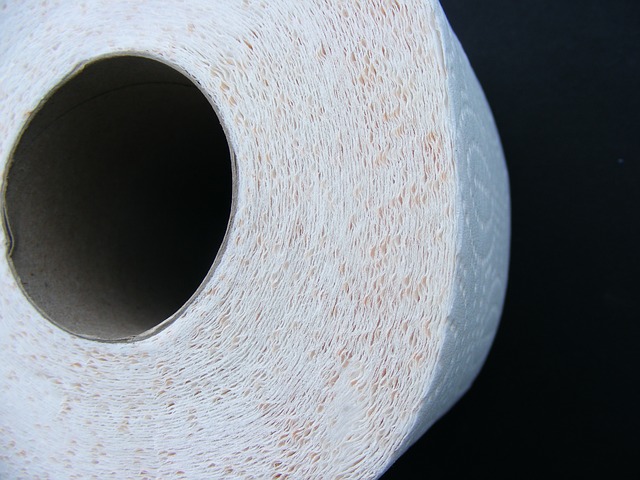In this guide, we outline some key information about regular toilet paper.
We discuss how it’s made, what features it might have, and manufacturing waste.
Summary – What To Know About How Regular Toilet Paper Is Made
Regular toilet paper is currently used in much larger %’s compared to other types of toilet paper like bamboo, recycled, etc
How regular toilet paper is made depends on the company making it, and the individual product. Different companies source and manufacture their TP products it in different ways
Some companies may use more sustainable processes than others.
For example, some companies may try to source from sustainably managed wood/tree/forest stock, may try to limit the chemicals they use during production, may also try to treat or re-use the chemicals they use in the manufacturing process.
But generally, toilet paper in developed countries might come from wood stock grown specifically for toilet paper (i.e. from plantations), and might use chemicals, bleaches, fragrances, dyes, and other substances in the manufacturing process
How Regular Toilet Paper Is Made
The general process for making regular toilet paper might be as follows:
– Growing Trees
Trees are grown (hardwood for softness, and softwood for strength) on plantations
These trees are grown specifically to be harvested and used for their wood resources
– Certified Forestries, Plantations & Forests
Some plantations and forestries are certified to a sustainable forestry standard, whilst others aren’t.
Several reports indicate that it’s rare in developed countries for rainforests and other types of highly biodiverse forests are cut down to provide stock for toilet paper
– Cutting Down Trees
Trees (called virgin wood as it’s using new and not recycled wood resources) are cut down
There may be one or several trees planted for every one tree cut down, but it depends on the forestry
– Trees Are Processed & Turned Into Wood Chips
Firstly, trees are prepared by having their bark stripped
Trees are then passed through a machine that chips them into small wood chips
– Wood Chips Are Processed Into Wood Pulp
The wood chips are put into a separate high heat/pressure cooker machine along with a chemical mix and water that separates substances like lignin from the cellulose wood fibres, and eventually the wood pulp can be separated
– Wood Pulp Is Processed
The pulp is cleaned and other substances like lignin are removed
The pulp is then bleached for whitening (regular chlorine-based bleaches like chlorine dioxide are used)
This is why on some packages you see claims like ‘reduced chlorine’, where chlorine bleaches have intentionally been reduced
– Wastewater From Chemical Processing Of Pulp
The chemical process stage leaves a waste water
Sometimes this wastewater is dumped into a water source (like a river or ocean) instead of being treated or re-used
– Pulp Sprayed Onto Screen
The pulp is mixed with water and sprayed onto screens to dry
– Paper Is Processed, & Turned Into TP
Paper is pressed into thin paper
The paper is scraped and wound onto large reels
The paper is cut, perforated (into squares), inked/dyed for coloring and patterns, and scented with fragrance
The paper is cut into small rolls and packaged
What Waste Comes From The Manufacture Of Regular Toilet Paper?
Some of the different types of waste from toilet paper manufacturing might include:
Bark (stripped from the virgin trees)
Black liquor (removed from pulp)
Tall Oil (from the reduction process)
Cooking Chemicals (can be recovered and re-used)
Bleaches like chlorine dioxide (used in whitening the toilet paper)
Features Of Regular Toilet Paper
Some of the features of regular toilet paper might include:
– Usually sourced from tree plantations grown specifically for wood.
Can come directly from trees, or from wood offcuts.
– Sometimes trees are planted immediately after being cut down, and sometimes they are not (it depends on the company)
– Sometimes the tree plantations are sustainably certified with sustainability standards, and sometimes they aren’t
– Trees cut down mean less oxygen production and less CO2 absorption (among other lost benefits that trees provide)
– The manufacturing process uses chemicals to turn the wood fibres in wood chips into paper pulp
Usually uses dyes and inks for patterns and pictures on the toilet paper
Usually uses bleach and chlorine for paper whitening (some people are concerned about the dioxides in the chlorine)
Usually uses fragrances for scents on the toilet paper
– The whole plantation and manufacturing process uses water, electricity and other resources like energy, and land
– Toilet paper usually includes a cardboard core cylinder
– Toilet paper comes in packs of different ply rolls, with different numbers of rolls, and in plastic packaging
Can be 1, 2 and 3 ply
Usually quite soft and thick if a 2 or 3 ply toilet paper
– Usually cheap (slightly cheaper than recycled and bamboo toilet paper)
Regular vs Recycled vs Bamboo Toilet Paper: Comparison
You can read a comparison guide about differences between these toilet paper types, and which toilet paper might be best here.
Most Eco Friendly Toilet Paper Options
Read more in this guide about potentially the most eco friendly and sustainable toilet paper options
Sources
1. http://www.toiletpaperhistory.net/toilet-paper-made/how-is-toilet-paper-made/
2. https://toilettravels.com/toilet-talk/how-is-toilet-paper-made/
3. http://www.madehow.com/Volume-6/Toilet-Paper.html
4. https://www.bettermeetsreality.com/regular-vs-recycled-vs-bamboo-toilet-paper-comparison-differences-which-is-best/
','' ); } ?>